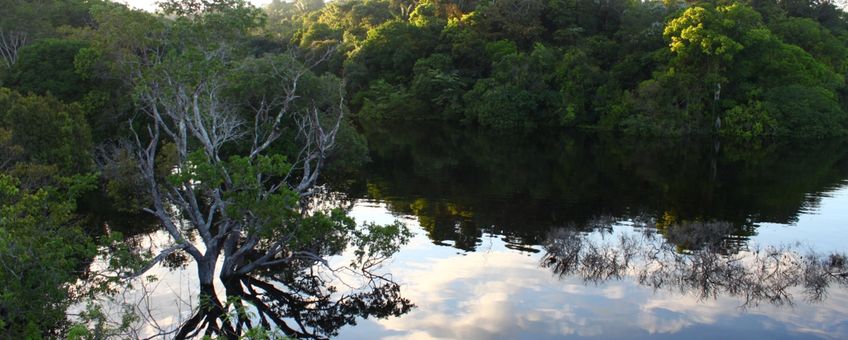
Deforestation in the Amazon may be irreversible
Institute for Biodiversity and Ecosystem Dynamics (IBED)About a sixth of all biomass on Earth is produced in the Amazon. The ecosystem is therefore very important for carbon storage. In addition, the area is of unprecedented value for biodiversity: the Amazon is home to ten percent of the world's known species of plants and vertebrates. But in recent decades, forest clearing for agriculture and industries such as gold, oil and gas extraction, has been accelerating at an increasing rate, with a massive negative impact on surface water flow. In the last four years in particular, deforestation has accelerated fast, with the years 2020 and 2021 standing out in particular, with 17 percent more deforestation than before.
A UN panel on the Amazon
Earth scientist Carina Hoorn of the University of Amsterdam is a member of the 'Science Panel for the Amazon', a United Nations initiative that includes 240 researchers from 20 countries. The panel examined the rates of natural and human-induced change in the area.
Hoorn was one of two working group leaders of the study on the history of the soil, subsoil, hydrology and climate of system Earth and the history of biodiversity. The report by this working group was published in 2021 and has now led to a scientific review publication in the renowned journal Science.
Alarm bell
Together with the working group, Hoorn is sounding the alarm bell once again, because deforestation is going much faster than previously thought, as the comparative study shows. "The Amazon is the product of millions of years of development. That is a very different time scale from the one we humans are familiar with. Anthropogenic changes are hundreds to thousands of times faster than natural climatic and geological changes. The system cannot compensate for the rapid destruction we cause. Human influence in the Amazon is now so significant that natural processes in an area of millions of square kilometers have no time to recover."
From carbon sink to source
On a geological timescale, nature in the Amazon is quite flexible, says Hoorn. "We know that the Amazon and surrounding areas had tropical forest 65 million years ago. Forest and wetlands alternated and now the area is once again dominated by tropical forest. Destroying such a system is likely a journey without return. If the natural conditions are deeply disturbed in such a large area it will not be able to recover, and an impoverished, unstable ecosystem will take its place. So far, the Amazon has always been a global carbon sink, but if the threshold is exceeded, it may become a source. The Amazon's role in the global climate thus could reverse." And due to the Amazon's huge size, this could even result in global climate change.
Message to world leaders
Hoorn and her colleagues have a message to world leaders: "Science is deeply concerned about the irreversibility of developments. If the tipping point is passed, it will mean the dawn of an uncertain new era, probably without diverse tropical forests."
Countering deforestation in the Amazon was already a major topic of Brazil's presidential election in autumn 2022, the country where most of the Amazon rainforest lies. Hoorn: "Former president Bolsonaro saw it as a reclamation area. The new president Lula wants to protect it and has appointed an indigenous Minister of Environment. That is very positive."
Already last year, another group of scientists published a policy brief to turn the tide for the Amazon. They say it is important to actively protect the remaining (original) forest immediately through monitoring and strict control of illegal logging and environmental destruction and fencing off the partly destroyed or recovering forest so that it can grow back naturally. This is possible by enforcing nature policies on a regional scale and involving indigenous people, among other options.
Text: IBED
Photo: Artur Warchavchik, Wikimedia Commons
